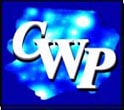Some Important Contributions:
Discovered that neutrons are
emitted in spontaneous fission.
With her husband, Maurice Goldhaber, confirmed the identity of beta rays with atomic electrons by showing
that the Pauli exclusion
principle operates in states of a constituent beta ray
particle and an atomic electron.
Worked in both
experimental and theoretical
research. Pioneered various developments in nuclear structure
studies, such as: systematics of excited states in even-even nuclei;
long lived isomers, some of which exhibit K-forbiddeness; variable moment
of inertia model, relation of moment of inertia to quadrupole moment, and
pseudomagic nuclei.
Some Important Publications:
"Spontaneous Emission of Neutrons from Uranium," Phys. Rev. 70: 229 (1946). [This paper was received for publication on May 18, 1942 but was voluntarily withheld from publication until the end of the war.]
"Identification of Beta Rays with Atomic Electrons," Phys. Rev. 73: 1472 (1948).
"Excited States of Even-Even Nuclei," Phys. Rev. 90: 587 (1953).
"System of Even-Even Nuclei," Phys. Rev. 98: 212 (1955).
"Highly Forbidden E1 Transition ("K-Isomerism")," BAPS Ser. II 1: 206 (1956).
"Triple Isomerism in Ir192," Phys. Rev. Letters 3: 47 (1959).
"Mass Difference of K40 - Ar40," Phys. Rev. 165: 4, 1184 (1968).
"High Spin Isomer Ir194m2 Produced by Triple Neutron Capture," Phys. Rev. Letters 21: 237 (1968).
"Phenomenological Analysis of Ground State Bands in Even-Even Nuclei," Phys. Rev. 178: 1864 (1969).
"The Variable Moment of Inertia (VMI) Model and Theories of Nuclear Collective Motion," Annual Review of Nuclear Science 26: 239 (1976).
"Isomeric Nuclei," Encyclopedia of Physics. Edited by R. G.
Lerner and G.L. Trigg. Dowden: Hutchinson & Ross, 1977.
"Pseudomagic Nuclei," J. Physics G: Nuclear Physics 5: L207-L211 (1979). Corrigenda 6: 413 (1980).
Honors
Fellow, American Physical Society (1947)
One of the few women invited to give a paper at the American Physical Society in the
late 1950s.
Member, National Academy of Sciences
Fellow, American Association for the Advancement of Science
The Brookhaven Women in Science (BWIS) established a
Gertrude S. Goldhaber Prize (1992) to be awarded annually to a female
graduate student in physics.
Boston University established a Gertrude and Maurice Goldhaber
Prize for outstanding new graduate students in physics.
Harvard University established a Maurice and Gertrude Goldhaber Prize for outstanding graduate students in physics.
Jobs/Positions
1935-39 Research Associate, Imperial College, London
1939-48 Research Physicist, University of Illinois
1948-50 Special Research Assistant Professor of Physics, University of Illinois
1948-50 Consultant, Argonne National Laboratory
1950-58 Associate Physicist, Brookhaven National Laboratory
1958-62 Physicist, Brookhaven National Laboratory
1962-79 Senior Physicist, Brookhaven National Laboratory (retired)
1980-82 Adjunct Professor, Cornell University
1982-86 Adjunct Professor, Johns Hopkins University
Education
Ph.D. University of Munich 1935
Additional Information/Comments
When Hitler came to power in Germany in 1933, Goldhaber felt
ostracized by many members of the Physics Institute at the University
of Munich but she stayed and finished her dissertation
with the support of her thesis advisor, Walther Gerlach. She then
left Germany and conducted post-doctoral work with George P. Thomson
at Imperial College in London.
The University of Illinois supplied Goldhaber with a laboratory
and graduate students but refused to give her a paid staff position because her
husband, Maurice Goldhaber, was a member of the faculty.
While working at the University of Illinois, Goldhaber discovered
that neutrons are emitted in spontaneous fission. This discovery
was deemed classified by the US government so her results were not
published until 1946.
Goldhaber was the first woman with a Ph.D. to join Brookhaven'
scientific staff.
In 1972, Goldhaber was only the third woman physicist elected to the
National Academy of Sciences.
Member, Advisory panel on the nuclear data project,
National Research Council (1959-64)
Chair, Panel for Evaluation of Nuclear Data Compilations,
National Academy of Sciences' National Research Council (1969-71)
Member, Board of Trustees, Fermi National Accelerator Laboratory (1972-77)
Member, Research Advisory Committee, National Science Foundation (1972-74)
Member, Nominating Committee for the Presidential Medal of Science (1977-79)
Throughout her career, Goldhaber has worked to promote physic
education and the place of women in science. To further this goal,
Goldhaber started a training course at Brookhaven in 1958 for pre-college
science teachers. In addition, she started the Brookhaven Lecture
Series in 1960 and sat on the National Research Council's Committee on
the Education and Employment of Women in Science and Engineering. In
1979, she co-founded Brookhaven Women in Science (BWIS).
"The vicious cycle which was originally created by the overt exclusion of women from mathematics and science must be broken... [I]t is of the utmost importance to give a girl at a very early age the conviction that girls are capable of becoming scientists."
-- Gertrude Scharff Goldhaber
Married to Maurice Goldhaber with whom she had two sons - Alfred and Michael.
Field Editor: Maurice Goldhaber
mgoldhab@bnl.gov
|  Welcome
to CWP at UCLA
Welcome
to CWP at UCLA  Welcome
to CWP at UCLA
Welcome
to CWP at UCLA